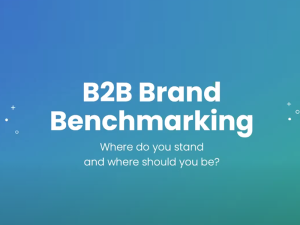In this article, we’re going to have a little look at how to create a really strong brand from scratch. This might be if you were, for instance, starting a new business or starting a new business unit, launching a new product, somewhere where you’ve got a complete blank slate.
Brand Positioning
We always start by knowing your markets. This is about understanding your customer, what’s important to them, what influences their buying decisions in your space. Once you know that, figure out who you have the potential to be to that audience. That might not necessarily “we are that right now”, it’s just we have the potential as a company to be X, Y, Z. This is our potential playing field.
Brand Research & Strategy
Once you’ve got that, we want to research and test those ideas with your target market. Say there’s four potential things that you could be to your market. You want to go out and figure out which one of those is going to be the strongest. Let’s say, for argument’s sake, we tested four ideas and actually the third one is the one that’s really resonating with your customers. You then pick that one and base all your messaging and strategy around that particular position for your business or product.
Brand Planning
Once you’ve got your messaging and strategy in place, then you get to get into actually making your brand a reality. Start by planning. It’s going to be tempting to just get straight into putting pretty colours on things, but you need to figure out where your brand is going to go, what it needs to do, and actually have a full plan of all the stuff you’re going to need to create for that brand before you put pen to paper. This will really help whoever is designing the brand and creating the brand to come up with an identity that’s going to work for the way that you want to use it.
The Fun Stuff
Once you’ve got your plan, then you get into the fun stuff. You can do naming, logos, colour palettes, tone of voice, all that kind of stuff, and create all the assets that you want, be that a new website or whatever it is.
Brand Guidelines
Once all that’s up and running and launched, you need to make sure that everybody stays on track with it. Brand guidelines, we always say do two versions. You’d have one version for your designers and writers and anyone who’s doing kind of marketing oriented tasks, where they’re actually going to need to know exactly what colour to use or exactly how many millimetres of white space need to be around the logo.
For most of your team, they’re never going to have to create that sort of thing and those sort of guidelines are going to be meaningless and possibly a little scary for them. We’d always say do a one or two pager for them that’s more based around the values, the culture, the behaviours, all the stuff that you want them to exhibit when they’re talking to your customers or even talking to other people in just generally in the outside world.
If you want people to represent your brand, they need a kind of people guidelines. That needs to be quite short and sweet, and focused on the things that they’re actually going to do day to day rather than the hex code for colour eight of your secondary palette.
Brand Governance
Once you’ve got the guidelines, then it’s just a matter of managing the brand, which is possibly the slightly more boring aspect of it, but really well managed brands are stronger brands.
Brand Evolution
The final element of brand management is strategic evolution over time. That’s when “what we did 10 years ago” doesn’t quite fit with “where we are now”. Or it stopped resonating quite as much as it did with the customer because something that was new and innovative then isn’t new and innovative now.
It’s not a matter of necessarily doing a rebrand all the time. You don’t have to completely change everything. You can leave your logo and your colour palette alone. Just look at your messaging and what you’re saying about your business and tweak that. Or, take slightly different approach in your creative. Pull out different elements of your brand that perhaps were seen as less important initially, but are now more important.
But brands are kind of a moving thing. They don’t necessarily stay fixed forever, but the real point to take away is that you must be in control of that movement. It’s a strategic decision from the top to change the brand, rather than letting everybody in a business organically move the goalposts over time because that will end up with a very disjointed story that doesn’t really work as a brand.










